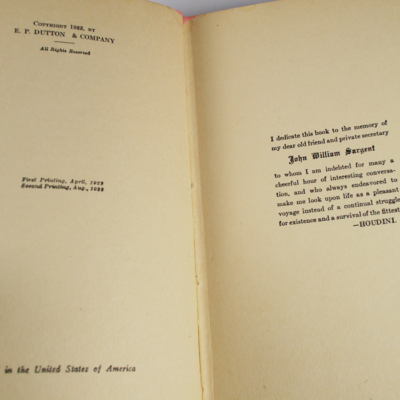


Surviving footage (in the George Eastman House, UCLA Film and Television Archive, and elsewhere) indicates that the modern city provided a compelling mise-en-scène for Houdini's outdoor escapes. After 1906, screenings of these actuality films were often a significant part of Houdini's stage act, as well as being included in various newsreels mdash not to mention embedded in otherwise fictional films like Exploits d'Houdini è Paris (Lux, 1909). These stunts, of course, served a publicity function, but were also almost always filmed. After the turn of the century, Houdini was performing many of his most spectacular escapes (manacled bridge jumps, upside-down straitjacket releases) outside of theatres. Foremost among these magicians was American escape artist Harry Houdini, who used motion pictures throughout his entire professional career. I term this "actuality magic" since it was seen in the early nonfiction films that showcase the tricks of magicians rather than the wonders of special effects. Trick films extended the recognizable iconography of stage magic into the adjacent medium of moving pictures, yet also made possible the appearance of another, more performance-based, mode of cinematic magic. Through adroit manipulations of mise-en-scène and illusionistic uses of splicing and multiple exposure, trick films made possible visual marvels that outshined the most stunning effects of the magic theatre. The trick film was a specifically cinematographic form of magic. The following document is an abstract of a paper accepted for presentation at the Visual Delights III - Magic and Illusion conference at the University of Sheffield, July 15-17th 2005.


 0 kommentar(er)
0 kommentar(er)
